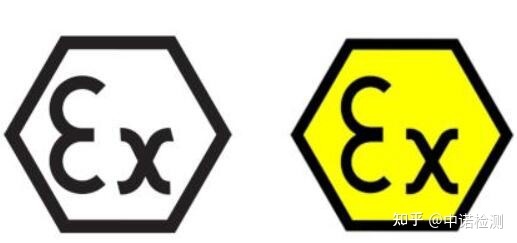The relationship between ATEX and CE
ATEX certification is an EU explosion-proof certification with a wide international reputation. Explosion proof products entering the EU market require processingATEX certificationThis is a mandatory regulation. ATEX certification meansZhongnuo TestingThe explosion-proof directive in the EU CE certification, which requires ATEX certification for explosion-proof products, actually means CE certification. However, ATEX certification has its own certification mark, which is different from CE certification for other products.


ATEX
ATEX is named after the French word "ATmosph è resExhibitibles".
The ATEX directive is a mandatory requirement within the European Union, which establishes a legal framework for manufacturers aimed at protecting the safety of employees and property, and avoiding the risk of explosion in areas with potential explosion hazards. In underground coal mines, oil fields and other mining fields, as well as various industrial fields such as petrochemicals, pharmaceuticals, surface spraying, printing, wood processing, metal surface grinding, etc., combustible dust and flammable gases can be generated in the workplaceZhongnuo TestingPotential explosive environment. Equipment and systems used in these or similar environments must comply with special explosion-proof safety requirements. All equipment used in Zone 0 and electrical equipment in Zone 1 must be certified by the EU ATEX notified body and bear the CE mark with the issuing body's announcement number, as well as the ATEX explosion-proof mark, in order to enter the EU market.
ATEX Explosion Protection Directive 2014/34/EU (Old Directive 94/9/EC)
ATEX originates from the French word "Atmosphere EXlpositible". On March 23, 1994, the European Commission adopted the Directive "Equipment and Protection Systems for Potential Explosive Environments" (94/9/EC). This directive has been in use since 1996 and was mandatory since July 1, 2003. The directive has now been updated to 2014/34/EU
Explanation of the new explosion-proof directive 2014/34/EU
The new explosion-proof directive 2014/34/EU was published in the official gazette of the European Union on March 29, 2014 and came into effect on April 18, 2014. The new explosion-proof directive 2014/34/EU will be officially implemented on April 20, 2016, and the old directive 94/9/EC will be replaced accordingly. With the update of the directive, the European Commission will implement the explosion-proof directive regulations in accordance with the new legislative framework (NLF).
The new version of the directive introduces a new legislative framework (NLF) that provides more detailed provisions while maintaining the product scope, product classification, basic safety requirements, and consistency assessment process unchangedZhongnuo TestingThe obligations of the distributor have been fulfilled. At the same time, under the new NFL architecture, the requirements for the certification process of the notified body are more refined, and the responsibilities of the organization in the certification process are clearer.
What changes have been made to the new instructions
Q: Has the product scope of the new explosion-proof directive 2014/34/EU changed?
A: The overall situation remains unchanged. Compared to the old instructions, the wording is different and the content remains consistent.
Q: When will the new explosion-proof directive come into use?
A: The new version of the directive was released on March 29, 2014; Effective on April 18, 2014; Executed on April 20, 2016.
Q: When can the certificate for the new explosion-proof directive 2014/34/EU be issued?
A: The new version of the directive certificate can only be issued from April 20, 2016. Prior to this date, the notified body can only make relevant preparations and is not allowed to issue certificates for the new version of the directive. Prior to this date, the notified body can onlyZhongnuo TestingIssue a certificate for the old version of the explosion-proof directive 94/9/EC.
Q: When the new version of the explosion-proof directive 2014/34/EU is officially implemented, is the certificate of the old version of the directive valid?
A: Still valid. As long as the certificate of the old version of the explosion-proof directive 94/9/EC is still valid, the certificate will remain valid.
Q: What should be noted when using the old version of the explosion-proof directive 94/9/EC certificate after April 20, 2016?
A: Customers holding old version directive certificates need to pay attention to providing new versions of explosion-proof directives when providing conformity declarations2014/34/EDeclaration of conformity for U.
Q: Can certificates issued according to the old version instructions after April 20, 2016 be subject to annual review or updated for renewal?
A: Sure. The annual review or renewal of certificates will be carried out in accordance with the new instructions.
Q: Can the manufacturer sign and provide a declaration of conformity based on the new version of the directive on April 20, 2016?
A: No way. The compliance declaration related to the new version of the directive can only be signed from April 20, 2016 onwards